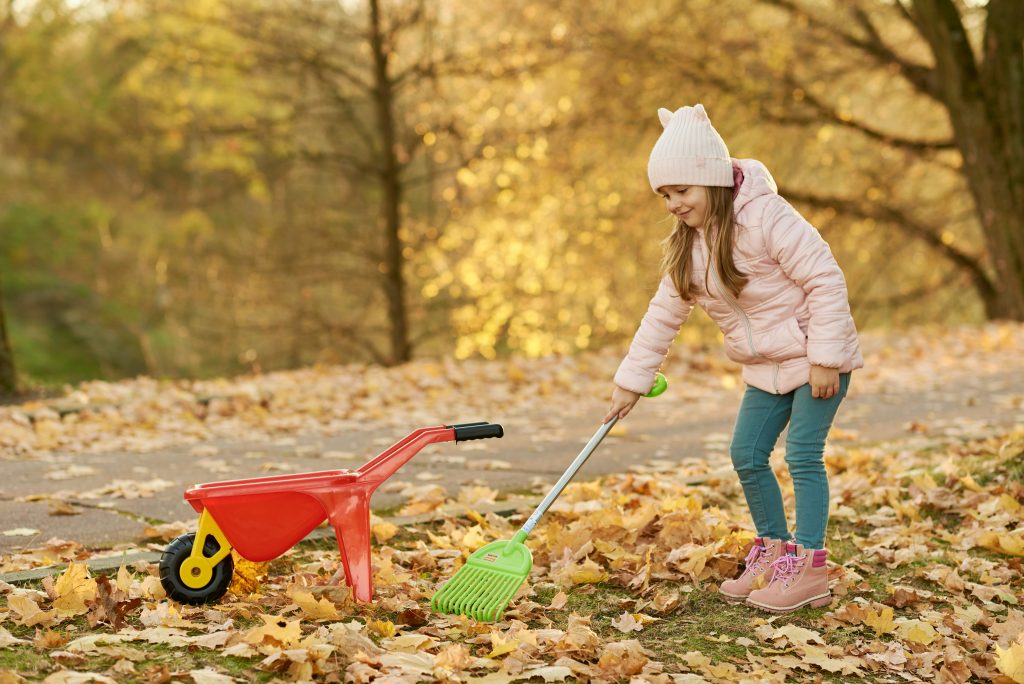
Fall is quickly approaching, and that means that it’s time to get ready for the cold winter months. One of the things you’ll want to do before the snow falls is rake up fallen leaves. Or is it? It may seem like an easy task – just grab a rake and start raking! But there are some factors you should consider before taking on this lawn care project. Like whether or not you should be doing it at all! Read on for some pros and cons to help you decide if you should rake up fallen leaves this fall.
Should I Rake Up Fallen Leaves?
There are a couple of ways to answer this question: yes and no. So which is it? If you rake up your fallen leaves, it means that the nutrients they provide will be taken away from your grass. However, if you leave them on your lawn, they can cause trouble, as well. Let’s look at the benefits and downsides to help you determine whether or not to rake up fallen leaves.
Benefits: When You Should NOT Rake Up Fallen Leaves
There are some benefits to leaving leaves on your lawn. For example, they help keep the soil moist. This can strengthen grassroots and prevent weeds from growing. Also, they act as a natural insulator for your grassroots.
A leaf layer can help limit invasive seeds finding exposed soil in which to germinate and spread. Leaf litter also makes an excellent natural mulch that fertilizes the soil as they decompose.
So if you’re planning on fertilizing or overseeding any time soon, you might not want to rake up fallen leaves just yet.
Additionally, environmental experts say raking leaves and removing them from your property is bad for the planet. When you bag them up and put them out with the waste, they end up in landfills, even though they are natural materials. They can also impact microenvironments for wildlife. Butterflies and songbirds alike depend on leaf litter as a source of bugs and food. Keeping some leaf litter can really benefit these kinds of declining wildlife in your area.
The Downside: Why You Should Rake Up Fallen Leaves
There are some downsides to not raking up leaves from your lawn. All plants need to receive regular access to oxygen and sunlight to thrive. Your grass is no exception. A thick layer of leaves will keep your lawn from breathing and can also block sunshine. In addition, piles of leaves that are left ignored over time can invite pests, mold, and other problematic invaders.
If you do rake up your leaves, make sure to dispose of them properly. But as we mentioned, that traditional method of bagging and tossing in the trash can be detrimental. Thus, if you do remove your leaves, consider an alternative solution. Cut them up and drop them in a plant or flowerbed that doesn’t get leaf cover. Or use your mower to mulch them right into the lawn!
Keep in mind that the best time to rake up leaves is right after you’ve finished fertilizing or overseeding. However, if there are still some remaining on your lawn when winter comes around, it’s okay if you leave them. And if you really want to remove your leaves, you can look into environmentally friendly options. Most cities have a designated leaf pickup day for such waste, as long as you bag the leaves in compostable materials like paper bags. Some municipalities also have compost programs, which allow you to send your leaves off and get mulch back. Win-win!
Tips for Protecting Your Lawn in the Fall
Other than taking time to rake up fallen leaves, there are other things you can do this fall to protect your lawn.
Aerate
Aerate your lawn in the fall to allow water and nutrients in. Aerating your lawn is especially useful in the fall because it will help the soil absorb much-needed moisture before the ground freezes. This is the process of removing soil plugs and freeing up passageways for nutrients to reach the roots of the grass. Aerating your lawn can be hard, physical work. If you have a large lawn or hard soil, it may be most effective to call in professionals to help you aerate your lawn.
Remove Debris
Other than raking leaves, you should also clear other debris off your lawn. That includes both natural plant matter and things like toys and furniture. Don’t just rake up dead plants or flowers, remove them completely.
Be sure to move furniture and toys off your lawn before winter so they don’t damage your lawn. You should also do a quick sweep of your lawn and manually remove any weeds you see.
Bottom Line: Rake Up Fallen Leaves Or Not?
So what’s the bottom line on whether or not you should rake up fallen leaves? While the answer isn’t completely straightforward, the consensus is that there are many benefits to leaving the leaves on your lawn. As long as you take proper precautions to protect your grass!
If you’re going to rake up fallen leaves, do so frequently to make sure they don’t form pockets underneath the pile. This way your lawn will still receive water and sun as quickly as other parts of your lawn do. And consider ways to mulch the leaves yourself, find an environmentally safe way to dispose of them, or move to a better location on your property.
If there are still some remaining on your lawn when winter comes around, no big deal! Just rake them into a pile and let animals like birds eat the fallen leaves. Your local ecosystem will thank you!
